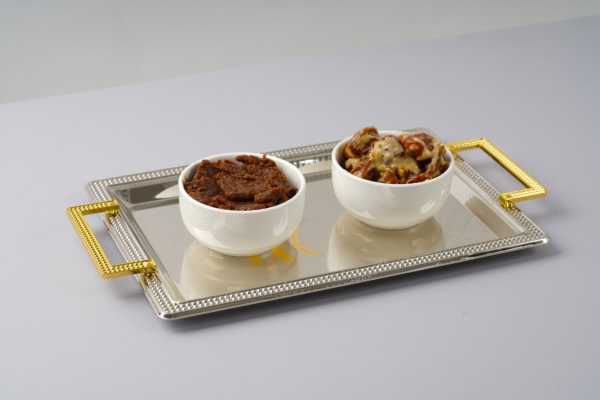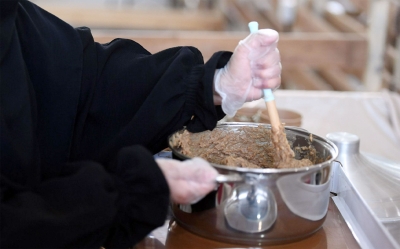
It is one of the traditional desserts known in most provinces of the Kingdom of Saudi Arabia. It is prepared using millet flour or wheat flour, and it can also be made from barley. Like most Saudi traditional dishes, particularly those originating from Riyadh, Qassim, and Makkah al-Mukarramah, dates and millet flour are essential ingredients in making al-Qishd, which is often served for breakfast or dinner.
Al-Qishd is known in some areas, such as Wadi ad-Dawasir Governorate, as "al-Abeet." These names reflect the texture of al-Qishd without being cooked over a fire. However, in some provinces, the flour is manually kneaded with ghee or butter to take a more solid form, resembling traditional dough. It is then served with added cream or cardamom. In other areas, it is cooked over a fire, resulting in a denser texture, and is served with almonds and walnuts on the side.
The Qishd intersects with several traditional dishes in most Saudi provinces, such as the Sha'atha dish, especially in areas that include dates in their cuisine, like Wadi ad-Dawasir Governorate. Qassim Province, known for having the largest date palm farm in the world, is famous for preparing various dishes that include dates, such as Hanini and date syrup used in the ingredients of Klija. Qassim Province serves as a local and Gulf supplier of Kleija, and the Qishd is one of the prominent dishes in these preparations.
Related quizzes
Related articles


